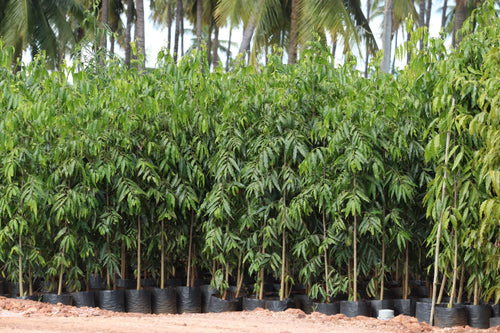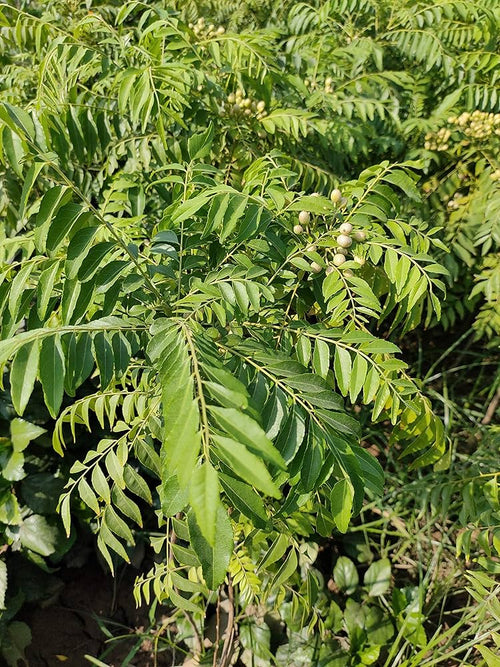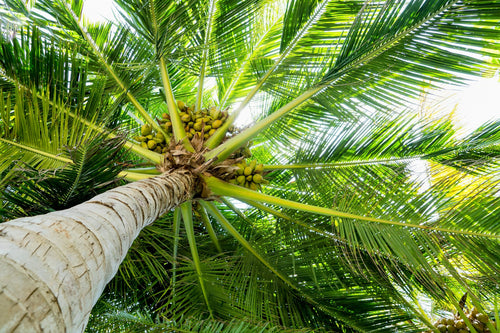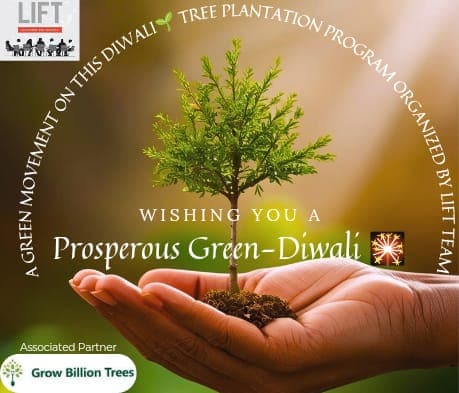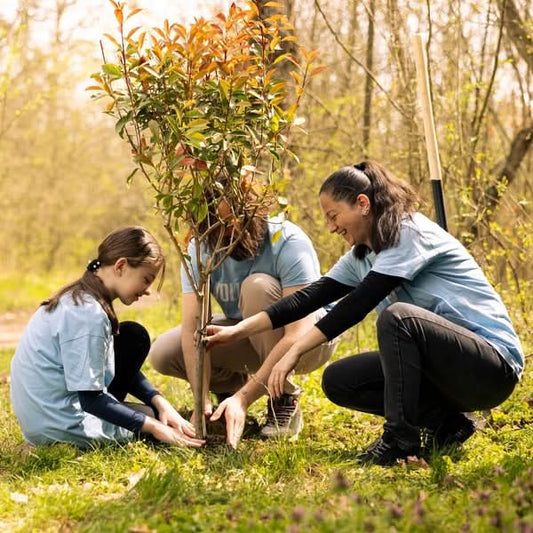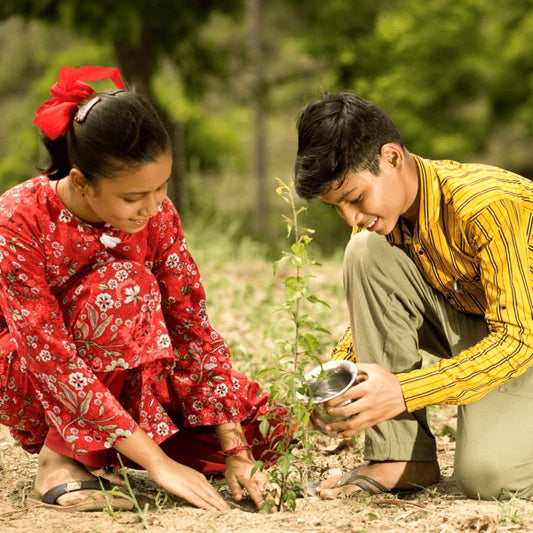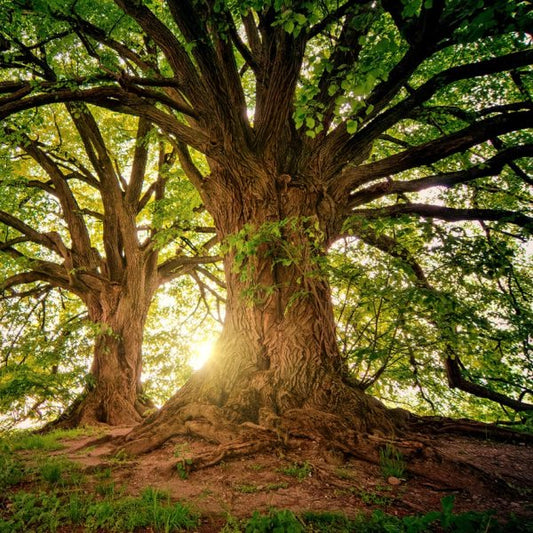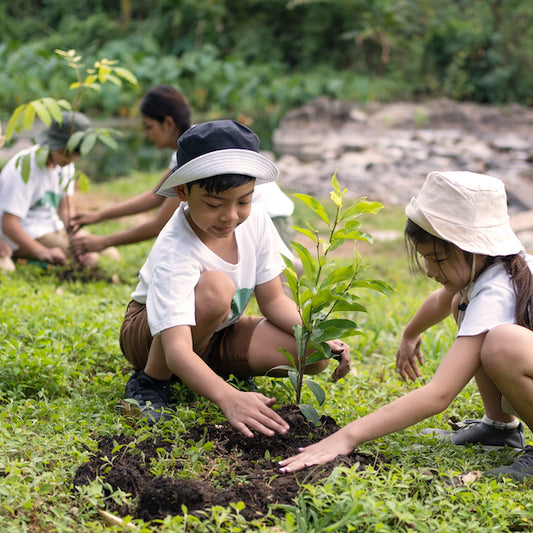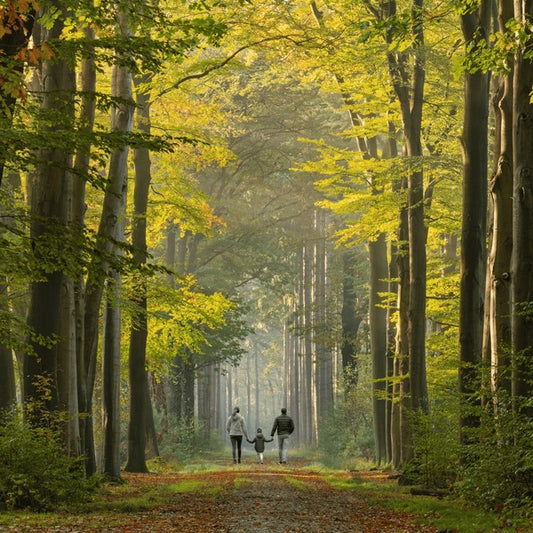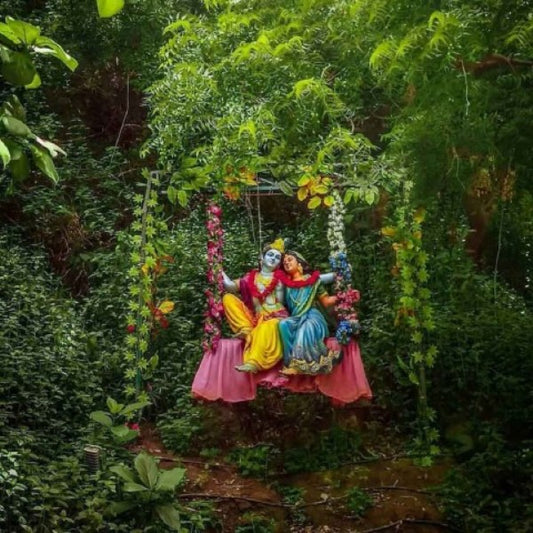One Machine = One Tree Growing a Greener Tomorrow with Sharp Engineers
Sharp Engineers, a leader in the elevator traction machine manufacturing industry, is committed to engineering a sustainable future through its Miyawa Read more
Project Update 3

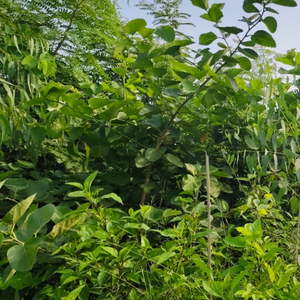
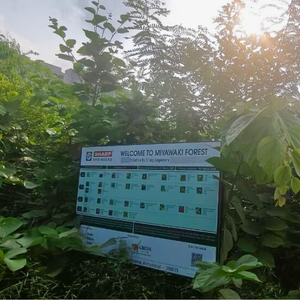
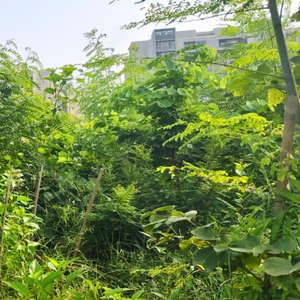
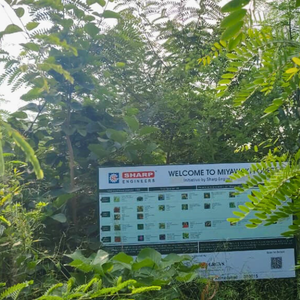
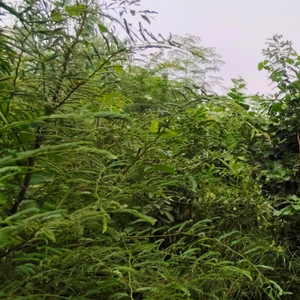
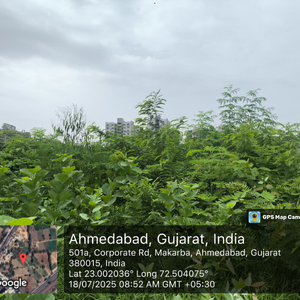
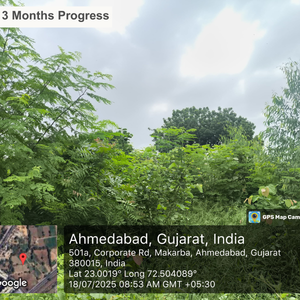
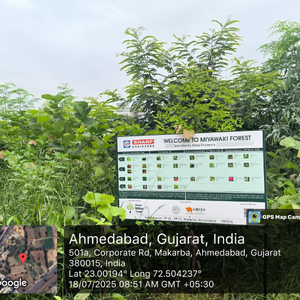
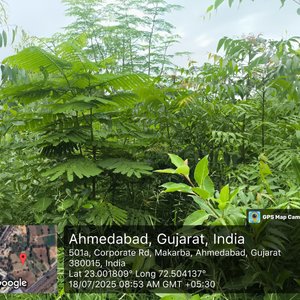
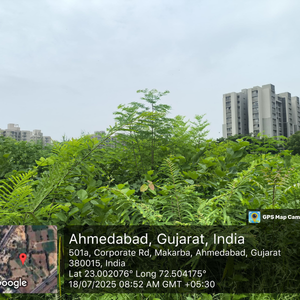
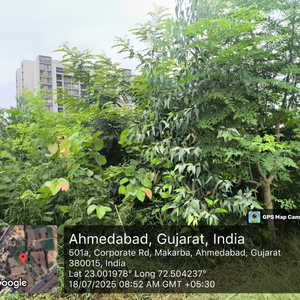
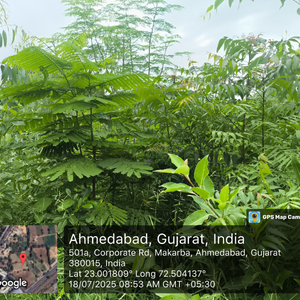
Project Update 2

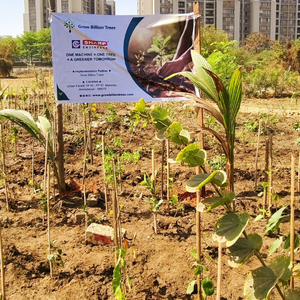
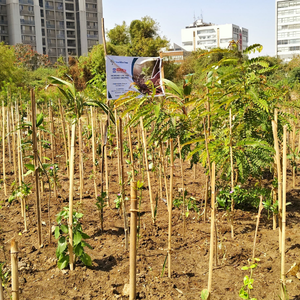
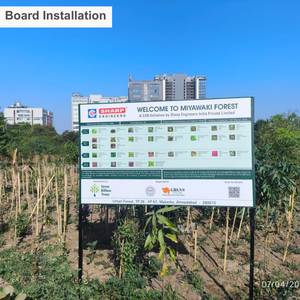
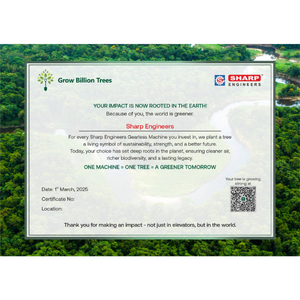


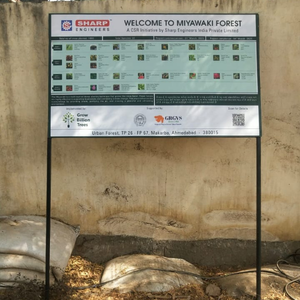
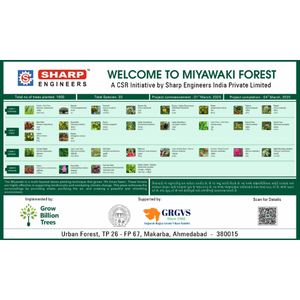
Project Update 1
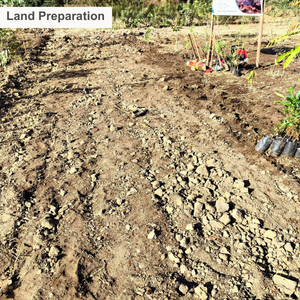
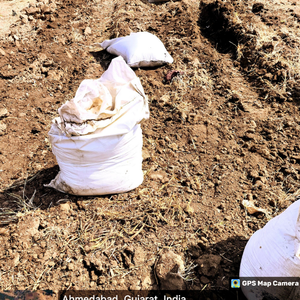
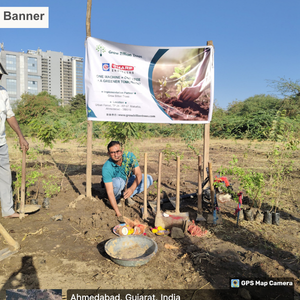
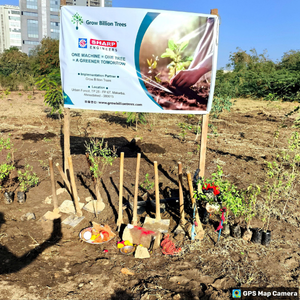
Digital Forest
Forest with 1,000 Trees planned
Want to plant your tree now?
Plant a Tree @ 299One Machine = One Tree Growing a Greener Tomorrow with Sharp Engineers
Sharp Engineers, a leader in the elevator traction machine manufacturing industry, is committed to engineering a sustainable future through its Miyawaki forest initiative. Embracing the philosophy of "One Machine = One Tree = A Greener Tomorrow," the company plants a tree for every purchase of a Sharp Engineers Gearless Machine, turning each transaction into a meaningful step toward environmental responsibility.
By adopting the Miyawaki afforestation technique, Sharp Engineers creates forests that grow 10 times faster, are 30 times denser, and host 100 times more biodiversity than traditional plantations. These compact, native forests restore degraded land, improve air quality, support urban biodiversity, and combat the urban heat island effect, offering powerful ecological impact in limited spaces.
This initiative is more than just planting trees; it’s about planting hope, resilience, and responsibility. Through the Miyawaki method, Sharp Engineers seamlessly blends technological innovation with nature-driven solutions, ensuring that each machine sold contributes to a thriving, self-sustaining green legacy.
Project Planning & Execution
No of Trees: 1000
Plantation Location: Urban Forest, TP 26, FP 67, Makarba, Ahmedabad – 380015
Plantation Duration: 1st March 2025 to 4th March 2025
Names of Species: Ashoka, Banyan, Coconut, Cluster Fig, Ebony, Neem, Papaya, Peepal, Date Palm, Drumstick, Guava, Gooseberry, Blackberry, Cherry, Kassod, Lemon, Mango, Orchid Tree, Custard Apple, Curry Leaf Tree, Holy Basil, Hibiscus, Sherbet Berry, Karonda, Kaner, Jasmine, Coleus, Periwinkle, Polka Dot Plant, Pathar Chatta
Species Selection & Its Benefits
The species selected for Sharp Engineers’ Miyawaki forest initiative were meticulously curated to suit the local ecosystem and maximise long-term ecological benefits. A total of 1,000 trees were planted, comprising 30 native species distributed across the Canopy, Tree, Shrub, and Ground layers, each contributing to the creation of a dense, self-sustaining forest using the Miyawaki method.
The selection includes long-living and shade-giving trees like Ashoka, Banyan, Neem, Peepal, and Ebony, which help regulate temperature and improve air quality.
Fruit-bearing species such as Guava, Mango, Papaya, Custard Apple, Indian Gooseberry, and Indian Blackberry support biodiversity and provide seasonal nutrition.
Medicinal and culturally significant plants like Holy Basil, Curry Leaf Tree, and Indian Cherry promote traditional wellness and community connection.
Flowering and ornamental species, including Hibiscus, Night Blooming Jasmine, Coleus, and Periwinkle, add aesthetic value and attract pollinators.
Ground cover and support species like Polka Dot Plant and Pathar Chatta contribute to soil health and microclimate regulation.
Together, this diverse mix ensures rapid forest growth, enhances biodiversity, and supports Sharp Engineers’ vision of a greener and more resilient urban future.
Beneficiaries Details
-
Target Population: Employees, stakeholders, and local community members of Ahmedabad
-
Age Group: All age groups focus on adults to seniors
-
Gender: Inclusive of all genders
- Social & Economic Status: Open to all social and economic backgrounds, emphasizing community involvement
Planting Methodology and Its Advantages
Miyawaki Technique: The Miyawaki technique is a dense afforestation method that promotes rapid green cover using native plant species. It consists of rapidly growing vegetation that develops 10 times faster and becomes 30 times denser than conventional plantations. By closely planting a diverse mix of flora, it creates a self-sustaining ecosystem that requires minimal maintenance. This method enhances biodiversity, improves air quality, absorbs carbon dioxide, and restores degraded land. Due to its high-density plantation style, it is especially effective in urban areas, offering environmental benefits such as temperature regulation, noise reduction, and soil enrichment.
Four-Step Process of Planting a Miyawaki Forest:
1. Preparation and Analysis
- Site Analysis: Begin with a thorough analysis of the site, considering factors like soil type, water availability, and sunlight exposure. This analysis guides the selection of native plant species best suited for the location.
- Soil Preparation: Clear the area of weeds and debris. Loosen the soil by tilling and amend it with organic compost to enhance fertility and moisture retention.
2. Plant Selection and Planting
- Plant Selection: Choose native plant species that are fast-growing, drought-resistant, and indigenous to the region. Diversity is crucial to mimic natural forests and promote ecological balance.
- Planting Technique: Dig pits or trenches for planting saplings, ensuring each has enough space to grow. Plant at a high density, typically 3 to 5 times denser than traditional forests.
3. Care and Maintenance
- Mulching: Apply a thick layer of mulch around the saplings to suppress weeds, conserve moisture, and protect the soil from erosion. Mulch also enriches the soil as it decomposes.
- Watering: Initially, saplings need regular watering to establish their roots. Once established, they require less frequent watering, but regular monitoring remains essential.
4. Monitoring and Growth
- Regular Maintenance: Perform regular weeding, pruning, and pest control during the initial years. Miyawaki forests become self-sustainable as they mature but still require occasional maintenance.
- Monitoring: Keep track of the forest's growth and health, monitoring for signs of stress, disease, or pest infestations and taking timely action when needed.
Four Layers of a Miyawaki Forest
The Miyawaki method emphasizes creating a multi-layered forest that mimics natural forests to achieve rapid growth and high biodiversity. Here are the four layers typically found in a Miyawaki forest:
- Canopy Layer: This topmost layer consists of tall trees that provide the canopy. These trees are usually fast-growing species that can reach heights of 15 to 30 meters or more. They offer shade and protection to the layers below.
- Tree Layer: Beneath the Canopy layer is the tree layer, consisting of smaller trees and larger shrubs. These plants help fill in the gaps between the taller trees, contributing to the dense foliage that characterizes a mature forest.
- Shrub Layer: Below the canopy, the shrub layer includes smaller shrubs and bushes that provide additional structure and diversity to the forest. These plants play a vital role in attracting pollinators and providing habitat for various wildlife.
- Ground Layer: The lowest layer is the ground layer, comprising ground covers, ferns, and herbaceous plants. These plants help to retain moisture, suppress weeds, and protect the soil. They also contribute to the overall biodiversity by providing habitat for insects and microorganisms.


Each layer in a Miyawaki forest serves a unique purpose and contributes to the forest's resilience, biodiversity, and ecological functionality.
Advantages of the Miyawaki Technique
-
Faster Growth: Vegetation grows up to 10 times faster than conventional methods due to high-density planting, soil conditioning, and native species selection. It reaches maturity in 20-30 years instead of over a century, making it highly effective for ecological restoration.
-
Biodiversity Enhancement: The technique encourages a diverse mix of native species, supporting wildlife such as birds, insects, and small mammals, contributing to habitat restoration and ecosystem resilience.
-
Sustainability: After the initial 3 years, these green spaces become self-sustaining, requiring minimal intervention. Natural mulch helps retain moisture and suppresses weed growth, making maintenance cost-effective.
-
Soil Health Improvement: Organic matter decomposition enhances soil fertility while root systems aerate the ground, improving water retention and preventing erosion, especially in degraded or sloped areas.
-
Microclimate Regulation: The dense vegetation reduces heat absorption, increases moisture release, and combats the urban heat island effect, improving air quality and energy efficiency in nearby structures.
-
Space Efficiency: This method allows for high-density planting in small areas, making it ideal for urban spaces, schools, and community parks, even on degraded land.
-
Ecosystem Restoration: By using native species, these forests seamlessly reintegrate with local ecosystems, supporting pollinators and maintaining ecological balance.
-
Low Water Consumption: Once established, the dense planting and bio mulch help retain moisture, reducing the need for frequent watering, making it a sustainable solution even in water-scarce regions.
Trees Planted
| Total Trees Planted: 1000 | |
| Total Species Planted: 30 | |
| Layer 1 | 8 species |
| Layer 2 | 10 species |
| Layer 3 | 8 species |
| Layer 4 | 4 species |
| Layer | Common Name | Scientific Name | Tree Count |
| Canopy | Ashoka / Mast Tree (Asopalav) | Monoon longifolium | 12 |
| Banyan (Vad) | Ficus benghalensis | 10 | |
| Coconut (Nariyeli) | Cocos nucifera | 8 | |
| Cluster Fig (Umaro) | Ficus racemosa | 32 | |
| Ebony / Indian Persimmon (Rayan) | Manilkara hexandra | 29 | |
| Neem (Limdo) | Azadirachta indica | 12 | |
| Papaya (Papaiya) | Carica papaya | 6 | |
| Peepal (Pipal) | Ficus religiosa | 4 | |
| Tree | Date Palm (Kharek) | Phoenix dactylifera | 35 |
| Drumstick (Sargava) | Moringa oleifera | 63 | |
| Guava (Jamfal) | Psidium guajava | 8 | |
| Indian Gooseberry (Amla) | Phyllanthus emblica | 42 | |
| Indian Blackberry (Jambu) | Syzygium cumini | 82 | |
| Indian Cherry / Glue Berry (Gunda) | Cordia myxa | 63 | |
| Kassod Tree (Kasid) | Senna siamea | 26 | |
| Lemon (Limbu) | Citrus limon | 85 | |
| Mango (Amba) | Mangifera indica | 76 | |
| Orchid Tree (Kanchnar) | Bauhinia variegata | 24 | |
| Shrub | Custard Apple (Sitafal) | Annona squamosa | 8 |
| Curry Leaf Tree (Mitho Limdo) | Murraya koenigii | 41 | |
| Holy Basil (Tulsi) | Ocimum tenuiflorum | 42 | |
| Hibiscus (Jasud) | Hibiscus rosa-sinensis | 85 | |
| Indian Sherbet Berry / Grewia (Falsa) | Grewia asiatica | 58 | |
| Karonda / Bengal Currant (Karamda) | Carissa carandas | 31 | |
| Kaner | Nerium oleander | 24 | |
| Night Blooming Jasmine (Ratrani) | Cestrum nocturnum | 46 | |
| Ground Cover | Coleus | Plectranthus scutellarioides | 16 |
| Periwinkle (Barmasi) | Catharanthus roseus | 30 | |
| Polka Dot Plant | Hypoestes phyllostachya | 60 | |
| Pathar Chatta / Parnfuti | Kalanchoe pinnata | 26 |
Activities During Tree Plantation
The tree plantation drive at Urban Forest, TP 26, FP 67, Makarba, Ahmedabad, was a well-orchestrated sustainability initiative under the Miyawaki forest concept, executed using the Miyawaki technique. All plantation activities were skillfully carried out by experienced ground partners to ensure precision, ecological alignment, and long-term forest health.
Before the event, the site underwent meticulous preparation, including land assessment, soil enrichment, and the digging of pits suited for the native saplings. On the day of the plantation, the initiative was led by Dhivan Patel from Sharp Engineers, accompanied by team members and the ground partners from Grow Billion Trees (GBT). The event began with a small pooja to invoke blessings for the green effort.
The activity concluded with the team planting the saplings in the designated pits, ensuring optimal placement for healthy growth. This was immediately followed by a watering session, providing essential hydration to the newly planted trees. The initiative stood out for its expert-driven execution and thoughtful planning, reinforcing Sharp Engineers’ commitment to long-term environmental sustainability and green transformation.
Conclusion Elements
Impact
Direct Impact
| Parameters | Values | References |
| No. of Trees Planted | 1,000 | |
| Green Cover (Acres) | 0.38 | |
| Carbon Sequestration Potential (KG) | 5 |
Small to medium-sized trees can sequester around 10–48 kilograms (22–106 pounds) of CO₂ annually. https://onetreeplanted.org/blogs/stories/how-much-co2-does-tree-absorb |
| Carbon Sequestration by 1000 mature trees ( Tons/year) | 5 Tons | No. of Trees x Carbon Sequestration by 1 mature trees per year |
| Carbon Credit Equivalent | 5 | One carbon credit is equivalent to one tonne of carbon dioxide or the equivalent amount of another greenhouse gas. |
| Carbon Footprint of an avg Indian Citizen (Tons/Year) | 1.8 | https://www.iea.org/countries/india/emissions |
| Offsets Annual Carbon Footprint of (Adults) | 3 | Carbon offset by 1000 mature trees per year / Carbon Footprint of an avg Indian Citizen per year |
*This impact analysis is forward-looking (A Miyawaki - Forest project matures in 3-5 years)
Indirect Impact
Community Impact
-
Improved Public Health: By improving air quality and reducing urban heat, the project indirectly contributes to better public health. The presence of green spaces encourages outdoor activities, which can reduce stress levels, promote mental well-being, and decrease the incidence of respiratory diseases.
-
Environmental Awareness: Involving communities in the Miyawaki plantation raises awareness about environmental conservation and promotes sustainable practices in daily life.
-
Employee Morale: The initiative fostered a sense of pride and connection among employees, strengthening team bonds and their alignment with the company’s values.
-
Inspiration for Change: By showcasing the potential of the Miyawaki forest, the project has encouraged other organizations and local communities to undertake similar initiatives.
-
Cultural Shift: The initiative instilled a mindset of sustainability and environmental care among participants, creating advocates for green practices in their personal and professional lives.
Environmental Impact
-
Carbon Sequestration: The trees planted through Sharp Engineers' miyawaki forest initiative absorb carbon dioxide, acting as carbon sinks and helping mitigate climate change by reducing greenhouse gas emissions.
-
Soil Health Improvement: The tree planting initiative enhances soil health by enriching it with organic matter, improving soil fertility and structure, which supports the growth of surrounding vegetation.
-
Erosion Prevention: Tree roots help stabilize the soil in urban areas, preventing erosion caused by wind and water while safeguarding nearby properties and infrastructure from potential damage.
-
Biodiversity Conservation: By creating green spaces, the initiative supports local biodiversity, providing habitats for various species, pollinators, and beneficial insects, and enhancing the ecological balance in urban areas.
-
Water Cycle Regulation: The miyawaki forest project helps regulate the water cycle by improving water retention in the soil, recharging groundwater levels, and reducing surface runoff, leading to a more balanced and sustainable urban environment.
- Microclimate Regulation: Trees planted through this initiative moderate temperature extremes, reduce wind speeds, and increase humidity, creating a favourable microclimate for both the community and the urban ecosystem.
Achievements
SDG Goals Achieved Through Miyawaki Plantation
-
SDG 3: Good Health and Well-Being – Sharp Engineers promotes community well-being by creating a green space that improves air quality, reduces pollution, and provides a calming, natural environment that supports better physical and mental health for students and residents.
-
SDG 4: Quality Education – Sharp Engineers has transformed the plantation site into a living learning space where students engage with nature, understand biodiversity, and develop environmental consciousness, enhancing their educational experience.
-
SDG 6: Clean Water and Sanitation – Through this initiative, Sharp Engineers contributes to water conservation by planting trees that support groundwater recharge, improve soil moisture retention, and reduce surface runoff, ensuring sustainable water availability in the area.
-
SDG 7: Affordable and Clean Energy – By increasing green cover and improving the microclimate, Sharp Engineers helps reduce the need for energy-intensive cooling solutions in the local community, thereby supporting cleaner and more efficient energy use.
-
SDG 8: Decent Work and Economic Growth – Sharp Engineers’ project generates employment opportunities for local nursery workers, planters, and caretakers while also building skills in sustainable land management and community-driven greening.
-
SDG 9: Industry, Innovation, and Infrastructure – Sharp Engineers adopts the innovative Miyawaki method of plantation, showcasing how forward-thinking environmental practices can be integrated into urban infrastructure for sustainable development.
-
SDG 11: Sustainable Cities and Communities – With this urban greening initiative, Sharp Engineers contributes to making Ahmedabad more sustainable by reducing the urban heat island effect, enhancing liveability, and building climate resilience in a rapidly growing area.
-
SDG 12: Responsible Consumption and Production – Sharp Engineers ensures responsible use of land and resources by selecting native tree species that thrive with minimal inputs, thus promoting long-term ecological sustainability and resource efficiency.
-
SDG 13: Climate Action – By planting trees that absorb carbon dioxide and mitigate rising temperatures, Sharp Engineers takes tangible climate action and helps combat the effects of climate change at the local level.
-
SDG 15: Life on Land – Sharp Engineers strengthens terrestrial ecosystems by restoring native flora, supporting local wildlife, and enhancing biodiversity in an urban environment through dense, diverse plantations.
-
SDG 17: Partnerships for the Goals – Sharp Engineers’s collaboration with Grow Billion Trees and the broader community reflects the spirit of SDG 17—building strong partnerships to achieve lasting environmental and social impact.
ESG Achieved through Miyawaki Plantation
-
Environmental Impact: Sharp Engineers’ miyawaki plantation initiative significantly enhances environmental sustainability. By planting diverse tree species, the company boosts biodiversity, creates habitats for wildlife, and supports local ecosystems. Trees act as carbon sinks, reducing CO2 levels and mitigating climate change. Additionally, the initiative improves urban climate resilience by regulating temperatures, reducing the heat island effect, and enhancing water retention, ensuring long-term ecological health for future generations.
-
Social Impact: Sharp Engineers’ plantation initiative using the miyawaki technique fosters community engagement and well-being by encouraging local participation in tree planting and environmental awareness. The green spaces created improve air quality, promote physical activity, and enhance public health. The project generates job opportunities in tree planting and maintenance while promoting social equity by ensuring access to green spaces for all, including marginalized groups. These efforts build a more inclusive, resilient, and sustainable community.
-
Governance Impact: Sharp Engineers demonstrates strong leadership and commitment to sustainability through its plantation initiative using the miyawaki technique. The company ensures transparency and accountability by effectively communicating project plans and outcomes to stakeholders. By collaborating with environmental organizations and local communities, it amplifies the impact of its efforts. This approach aligns with best governance practices, achieving environmental and social goals while promoting long-term sustainable growth.
Building Communities
One of the most impactful outcomes of Sharp Engineers’ Miyawaki forest initiative was the sense of unity and collaboration it cultivated. By involving employees, local communities, and volunteers, the project became a collective mission to create sustainable urban green spaces, fostering a shared commitment to a greener future.
-
Empowering Communities: Participants became active contributors, gaining knowledge about miyawaki plantation practices and taking ownership of the initiative. This empowerment strengthened their connection to the environment and reinforced their role as environmental stewards.
-
Fostering Partnerships: The project brought together diverse stakeholders, including Sharp Engineers, Grow Billion Trees, and local communities, highlighting the value of collaboration in achieving environmental and social goals.
-
Creating a Ripple Effect: As communities experienced the benefits of the Miyawaki plantation, their enthusiasm inspired others to adopt similar practices, amplifying the initiative's positive impact across the region.
This initiative demonstrates that environmental sustainability thrives when rooted in collective effort. It’s not just about planting trees; it’s about planting hope, collaboration, and a shared vision for a healthier and greener future.
Commitment by Grow Billion Trees
Acknowledgment
We at Grow Billion Trees extend our heartfelt gratitude to all those who have contributed to the success of the Miyawaki forest initiative across Ahmedabad. This project, which combines environmental sustainability with employee engagement, would not have been possible without the support and collaboration of our dedicated employees, local authorities, and partners. Their collective efforts in planting and nurturing trees are helping create a greener and more resilient future for urban communities. We are thankful for their commitment to fostering biodiversity, improving air quality, and promoting a sustainable future.
To Sharp Engineers: We sincerely thank you for your dedication to sustainability and employee engagement. Your innovative approach to the Miyawaki plantation has laid the foundation for a greener, more resilient future in Ahmedabad. Through your efforts, 1000 trees have been planted, fostering biodiversity, improving air quality, and creating lasting positive impacts on the environment. Together, we have created a legacy that will continue to benefit urban communities and contribute to a sustainable tomorrow.
To Our Ground Partners and Volunteers: Your expertise, dedication, and passion for environmental sustainability have been crucial to the success of Sharp Engineers’ miyawaki forest initiative. Through your collaborative efforts, we have made meaningful strides in creating greener urban spaces and promoting biodiversity across Ahmedabad. Your contributions have not only enhanced the environment but also fostered community engagement and awareness. Together, we are building a more sustainable future, and we look forward to continuing our partnership in creating a greener, healthier world for all.
Thank you for your unwavering support and commitment.
Closing Remarks
We are proud to have partnered with Sharp Engineers in their journey toward environmental sustainability through their Miyawaki forest initiative in Ahmedabad. This project has not only contributed to greener urban spaces but has also demonstrated Sharp Engineers' unwavering commitment to environmental stewardship and responsible corporate citizenship. It reflects the impact of collective action, where purposeful collaboration leads to a more sustainable future.
As we envision the continued success of this initiative, we remain dedicated to scaling such efforts and inspiring others to step forward for nature. Together, we are nurturing ecosystems, empowering communities, and setting benchmarks for a greener tomorrow.
A heartfelt thank you to everyone who played a part in this impactful initiative. Let’s keep the momentum going and work together for a thriving planet for today and for generations to come.
Trees for Corporates
Trending
Most Popular
1. Sharp Engineers Tree Plantation Initiative
A Green Revolution, One Machine at a Time Sharp Engineers is proving that sustainability and innovation can go hand in hand. With their "One Machine = One Tree = A Greener Tomorrow" initiative, they are turning urban spaces into lush green forests. For every Gearless Machine sold, a tree is planted, ensuring that business growth also nurtures the environment. Using the Miyawaki technique, these urban forests grow 10 times faster and absorb more CO₂ than traditional plantations. Imagine a world where every elevator ride contributes to cleaner air—Sharp Engineers is making it happen. Greener cities, healthier lives, and a thriving ecosystem—who knew an elevator company could be this cool?
2. Urban Forest by Sharp Engineers
The Future of Greener Cities Forget concrete jungles—Sharp Engineers is helping transform urban spaces into thriving green ecosystems. By planting dense, fast-growing forests with the Miyawaki method, they are restoring nature right in the heart of cities. These microforests improve air quality, reduce heat, and support biodiversity. With each Gearless Machine purchase, a tree takes root, making cities greener, cooler, and healthier. Who said engineering and nature don’t mix? Sharp Engineers is building elevators for the sky and forests for the future!
3. Miyawaki Urban Forests
The Secret Weapon Against Climate Change Sharp Engineers is using the Miyawaki technique to plant forests that grow at lightning speed—okay, maybe not literally, but they are 10 times faster than regular trees! These dense, self-sustaining forests absorb pollution, trap carbon, and bring back lost biodiversity. By collaborating with Grow Billion Trees, Sharp Engineers ensures that for every machine sold, nature gets a boost. It’s like hitting the environmental jackpot—climate action, biodiversity restoration, and urban cooling, all in one initiative!
4. Grow Billion Trees and Sharp Engineers
A Partnership Rooted in Sustainability Sharp Engineers isn’t just planting trees—they’re building a legacy of sustainability in partnership with Grow Billion Trees (GBT). This collaboration ensures expert-led afforestation using the Miyawaki method, creating urban forests that thrive. While farmers do the planting, Sharp Engineers and GBT witness the magic unfold. The result? A win-win for cities, businesses, and nature! It’s corporate social responsibility with real, measurable impact, proving that business success and environmental care can grow together—literally!
5. Corporate Sustainability by Sharp Engineers
Elevating Green Initiatives Sustainability isn’t just a buzzword for Sharp Engineers—it’s an action plan. With every Gearless Machine, they are planting trees, offsetting carbon, and making cities greener. This isn’t just about eco-friendliness; it’s about reshaping urban landscapes for future generations. Their approach to corporate sustainability is simple yet powerful—build elevators, plant forests, and make the planet a better place. Now, that’s what we call taking sustainability to the next level—pun intended!
6. Sharp Engineers’ Green Commitment
Making Machines That Plant Trees Most companies sell machines. Sharp Engineers sells machines AND plants trees—talk about a value-added service! With the Miyawaki urban forest approach, they ensure that their business leaves a positive footprint (or should we say rootprint?). Their initiative fights deforestation, supports biodiversity, and cools down our ever-warming cities. When business meets environmental responsibility, everyone wins—especially the planet!
7. Urban Biodiversity Restoration
How Sharp Engineers is Bringing Back Nature Urban areas aren’t exactly famous for their biodiversity—but Sharp Engineers is changing that. By planting dense, native forests using the Miyawaki technique, they’re inviting birds, bees, butterflies, and biodiversity back to cities. These forests don’t just look pretty; they improve soil quality, reduce noise pollution, and create urban green lungs. Who knew an elevator company could also be nature’s best friend?
8. One Machine, One Tree, One Greener Tomorrow
One Gearless Machine = One Tree. Their initiative ensures that with every sale, a tree is planted to offset carbon, clean the air, and restore nature. It’s their way of saying, "Thanks for choosing us—here’s a tree for the planet!" With cities heating up and forests disappearing, this initiative proves that even industrial giants can be green warriors. Elevators for the buildings, forests for the earth—what’s not to love?
FAQ
What is Sharp Engineers’ tree plantation initiative?
Sharp Engineers’ tree plantation initiative follows the "One Machine = One Tree = A Greener Tomorrow" concept, where a tree is planted for every Gearless Machine sold. Using the Miyawaki technique, we create dense, fast-growing urban forests that enhance biodiversity, absorb CO₂, and improve air quality. This initiative reflects our commitment to sustainability, ensuring that every business transaction contributes to a greener planet.
How does the Miyawaki technique help in urban forests?
The Miyawaki technique enables trees to grow 10 times faster than conventional methods, creating dense, self-sustaining forests in urban areas. These forests improve air quality, reduce heat, restore biodiversity, and provide ecological balance. Sharp Engineers uses this technique to ensure that every tree planted thrives in its environment, making cities greener and healthier.
Why is tree plantation important in urban areas?
Urban tree plantations reduce pollution, combat climate change, and improve overall well-being. Trees absorb carbon dioxide, release oxygen, and provide shade, lowering city temperatures. Sharp Engineers believes that urban afforestation is essential for creating sustainable cities, and our initiative contributes to greener landscapes, cleaner air, and increased biodiversity.
What role do businesses play in environmental sustainability?
Businesses have a responsibility to reduce their carbon footprint and adopt sustainable practices. Sharp Engineers integrates sustainability into its operations by planting trees with every Gearless Machine purchase. This initiative showcases how companies can positively impact the environment while continuing to innovate and grow.
How does Sharp Engineers ensure the success of its tree plantation initiative?
We collaborate with Grow Billion Trees (GBT) to ensure effective afforestation. The planting site is prepared in advance, and farmers handle the plantation process using the Miyawaki method. Our team witnesses the plantation, ensuring trees are planted correctly, followed by proper watering and care to ensure long-term survival.
What are the benefits of urban forests?
Urban forests provide multiple environmental and social benefits. They help reduce air pollution, prevent soil erosion, support wildlife, and regulate city temperatures. They also improve mental well-being by offering green spaces. Sharp Engineers' initiative ensures that every tree planted contributes to a healthier and more sustainable urban environment.
How does tree plantation align with Sharp Engineers’ values?
At Sharp Engineers, we believe in engineering excellence with sustainability. Our "One Machine = One Tree" initiative reflects our commitment to responsible business practices. By integrating tree plantation into our operations, we ensure that our growth also benefits the planet, reinforcing our vision of a greener tomorrow.
How does tree plantation contribute to fighting climate change?
Trees act as natural carbon sinks, absorbing carbon dioxide and releasing oxygen into the atmosphere. They help reduce the effects of climate change by lowering temperatures and improving air quality. Sharp Engineers' tree plantation initiative directly contributes to carbon sequestration, making cities more resilient to climate change.
What impact has Sharp Engineers’ tree plantation initiative made so far?
Sharp Engineers has planted numerous trees through our initiative, creating urban forests that support biodiversity and environmental sustainability. These forests improve air quality, enhance green cover, and foster ecological balance. Our commitment to planting a tree with every Gearless Machine sold ensures a long-term positive impact.
How can customers contribute to Sharp Engineers' sustainability initiative?
Customers can contribute by choosing Sharp Engineers' Gearless Machines, which automatically results in a tree being planted. By supporting our initiative, customers help create a greener future while investing in high-quality, energy-efficient elevator solutions. Together, we can make a meaningful difference for the environment.
- Choosing a selection results in a full page refresh.
- Opens in a new window.


